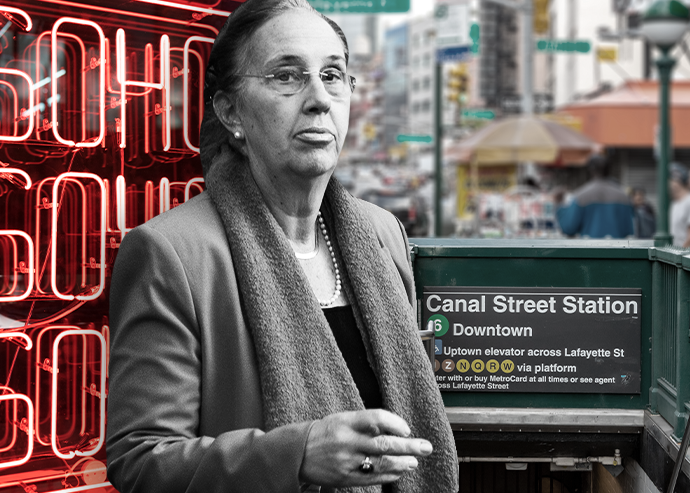
Manhattan Borough President Gale Brewer (NYC Gov, iStock)
The fate of the proposed Soho and Noho rezoning hinges on whether enough changes can be made to satisfy affordable housing concerns.
Last week, City Planning suggested a few tweaks to the plan, including decreasing the amount of commercial space permitted in certain areas. The changes would slightly reduce potential floor area ratios for commercial space in two subareas, lowering the proposed ratio from 10 to 8 in the southeast end of the Soho rezoning and to 7 in the northeast subarea.
During a hearing last week, Edith Hsu Chen, director of City Planning’s Manhattan office, acknowledged that the proposed adjustments address concerns that the rezoning would net too much commercial development. Still, she emphasized that commercial space is integral to the future of the neighborhoods.
“We believe achieving our housing goals while still supporting and enhancing the mixed-use commercial district of Soho/Noho, are not mutually exclusive goals,” she said. “In fact, we think they are very important to one another.”
But the modifications, so far, have failed to appease critics.
Manhattan Borough President Gale Brewer said in an interview that the changes do not go far enough to ensure the creation of significant affordable housing, nor does it disincentivize the demolition of existing rent-stabilized apartments to make way for new construction.
Brewer said she is hopeful that further alterations to the plan will be made before the proposal comes up for a final vote. Local Council members Margaret Chin and Carlina Rivera have similarly raised concerns that the rezoning, as it stands, would not result in adequate affordable housing.
Will Thomas, executive director of pro-development group Open New York, echoed that the changes would still lead to an overwhelming amount of new commercial development. He warned that the rezoning could result in a “reverse Long Island City,” referring to the fact that the Queens neighborhood’s rezoning resulted mostly in new apartments, rather than office space as was intended.
The rezoning proposal would pave the way for higher density commercial and residential development, given that Soho and Noho are currently zoned for manufacturing.
Officials estimate that 1,829 residential units could be created under the rezoning over the next decade, with 382 to 573 set aside as affordable in accordance with the Mandatory Inclusionary Housing program. After 10 years, another 1,719, with 365 to 545 permanently affordable, could be built.



